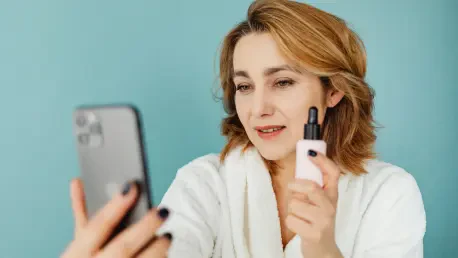In the rapidly evolving landscape of digital advertising, influencer marketing has emerged as a dominant force, reshaping how brands connect with audiences through social media platforms where consumer attention is most concentrated. This seismic shift from traditional media like print and television to authentic, creator-driven content has given rise to a thriving influencer economy, encompassing everyone from casual hobbyists with niche followings to global celebrities commanding millions. Yet, beneath the surface of viral posts and sponsored campaigns lies a growing wave of risks—legal, financial, and reputational—that many brands and creators are ill-prepared to navigate. As marketing budgets pour into partnerships with thousands of influencers simultaneously, the potential for costly missteps looms large. The industry stands at a critical juncture, grappling with challenges that demand innovative approaches to risk management, signaling an urgent need for solutions tailored to this dynamic and unpredictable space.
The Explosive Growth of the Influencer Economy
The influencer economy has transformed into a powerhouse within modern marketing, driven by the unparalleled trust consumers place in personal recommendations over polished advertisements. Spanning a wide spectrum, this economy includes micro-influencers who earn modest incomes from small but engaged audiences, as well as top-tier creators whose global reach translates into millions in revenue. However, it’s the mid-tier influencers—those pulling in tens of thousands annually—who often present the most significant blend of risk and opportunity. Lacking the robust support systems of larger players, these creators can become a liability when issues arise, yet their authentic connection with followers makes them invaluable to brands. This diverse landscape underscores the complexity of leveraging influencer content, as companies must balance the allure of personal engagement with the potential pitfalls that accompany such an unscripted approach to advertising in today’s digital age.
Beyond the financial tiers, the sheer scale of influencer marketing’s growth highlights its pivotal role in reshaping brand strategies across industries. Companies are increasingly redirecting substantial portions of their budgets toward social media, recognizing that platforms like Instagram and TikTok are where consumer attention thrives. This pivot, while effective in capturing eyeballs through relatable content, often blurs the boundaries between personal expression and commercial intent, creating fertile ground for misunderstandings and legal challenges. The stakes are elevated as brands partner with an ever-growing number of creators, sometimes managing thousands of campaigns at once. Such volume amplifies both the reach and the risk, necessitating a deeper understanding of how to harness this powerful tool without falling victim to its inherent vulnerabilities, a concern that continues to ripple through the marketing world as the influencer economy expands unabated.
Unforeseen Dangers in Influencer Content
Unlike traditional advertisements subjected to stringent legal oversight, influencer content is frequently produced with speed and independence, often bypassing critical checks that could prevent serious issues. Common pitfalls include copyright infringement, such as the unauthorized use of background music or imagery without proper licensing, alongside more personal violations like defamation or invasion of privacy through ill-considered posts. Misuse of someone’s likeness, known as right of publicity violations, also ranks high among potential errors. These mistakes can swiftly escalate into expensive legal battles, with brands typically bearing the financial brunt since many influencers lack the resources or insurance to cover damages. This vulnerability transforms a seemingly innocuous post into a significant liability, exposing a critical gap in the safeguards surrounding influencer-driven campaigns.
Adding to the complexity, the informal nature of social media amplifies these risks by fostering an environment where creators may not fully recognize the legal distinctions between personal and sponsored content. Many platforms offer blanket licensing agreements for non-commercial use, but these protections rarely extend to paid partnerships, leaving influencers exposed when they cross that fine line. A viral video or post, intended to boost brand visibility, can instead become a source of litigation if proper permissions aren’t secured. This lack of clarity often catches both creators and companies off guard, as the rapid pace of content creation outstrips the ability to implement thorough vetting processes. The result is a landscape where the very authenticity that makes influencer marketing so effective also serves as a double-edged sword, posing challenges that demand immediate attention from all stakeholders involved in this space.
Shortcomings in Awareness and Conventional Coverage
A significant hurdle in the influencer marketing arena stems from a widespread lack of legal awareness, particularly among smaller or mid-tier creators who may not grasp the implications of their content’s commercial nature. Without a clear understanding of boundaries, these influencers often inadvertently step into risky territory, posting material that violates copyright or privacy laws with little foresight of the consequences. Compounding the issue is the timing of legal intervention—when counsel is brought in late, the ability to mount an effective defense diminishes, leading to heightened financial losses and reputational damage for both the influencer and the associated brand. This gap in preparedness acts as a silent threat, undermining the stability of campaigns in an environment where a single misstep can spiral into a public relations crisis.
Equally troubling is the inadequacy of traditional media liability insurance when applied to the unique challenges of influencer partnerships. Many brands, even those with existing policies, encounter frustrating coverage gaps or face steep deductibles that fail to shield them from the full impact of influencer-related claims. These conventional products, designed for older advertising models, struggle to address the nuances of social media content, where risks are both more frequent and less predictable. As a result, companies find themselves exposed to significant losses, unable to rely on outdated frameworks to mitigate the fallout from legal disputes or other liabilities. This mismatch between current needs and available protections has sparked a pressing demand for specialized tools that can keep pace with the evolving dynamics of digital marketing strategies.
A Game-Changing Approach to Risk Mitigation
Recognizing the urgent need for tailored solutions, QBE North America has introduced a pioneering insurance product called “The Influencer by QBE,” launched in mid-August of this year. Drawing on over a decade of expertise in media liability coverage, this innovative offering combines education with practical protection, equipping both brands and influencers with the tools to navigate potential pitfalls. A key component is a 30-minute educational video paired with a quiz, covering critical legal topics such as copyright, trademark, and defamation laws, aimed at preventing issues before they escalate. By prioritizing awareness alongside financial safeguards, this product represents a forward-thinking shift in how the industry approaches the inherent uncertainties of influencer marketing, setting a new standard for proactive risk management.
Further distinguishing this solution is its campaign-specific focus, offering a $250,000 limit per contract and extending coverage to both brands and influencers for actions taken by the latter. Distributed through brokers and supported by a dedicated online platform for onboarding and training, the product ensures accessibility and ease of implementation for companies managing multiple partnerships. This structure not only addresses immediate liabilities but also fosters a culture of accountability and knowledge among creators, reducing the likelihood of costly errors. As brands scale their influencer engagements, such a comprehensive and adaptable approach provides a much-needed safety net, aligning with the fast-paced, ever-changing nature of social media advertising. QBE’s initiative marks a pivotal moment, offering a blueprint for how the insurance sector can evolve to meet the demands of this digital frontier.
Charting the Path Forward in Digital Marketing Risks
Reflecting on the journey of influencer marketing, it’s evident that the industry faced a steep learning curve as it adapted to the surge of social media-driven campaigns over recent years. The legal and financial challenges that emerged, from copyright disputes to privacy violations, tested the resilience of brands and creators alike, often leaving them vulnerable due to insufficient traditional protections. QBE North America stepped in at a crucial time with “The Influencer by QBE,” a product that not only mitigated risks but also empowered stakeholders through education and targeted coverage. This dual strategy tackled the root causes of liability while providing a buffer against unforeseen issues. Moving forward, brands are encouraged to integrate such specialized solutions into their strategies, ensuring they can capitalize on influencer partnerships without fear of derailment. As the digital landscape continues to evolve, staying ahead of potential risks through innovative tools and informed practices will be key to sustaining growth and trust in this vibrant marketing space.









